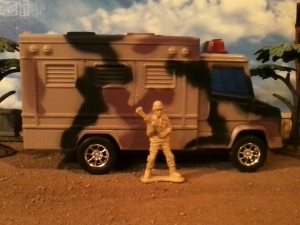 Released in 2014 by Pen & Sword Military, One-Hour Wargames contains miniature wargaming rule sets for nine historical periods, ranging from ancient times through World War II.
Released in 2014 by Pen & Sword Military, One-Hour Wargames contains miniature wargaming rule sets for nine historical periods, ranging from ancient times through World War II.
The book begins with a chapter on wargaming, obtaining and preparing miniatures, and obtaining or making terrain. The next several chapters treat each historical period in turn, first with a brief overview of the historical period in question, the major types of units fielded by armies at that time, and a brief outline of tactics used by those units; after that introduction, the following chapter states the actual rules Thomas devised for that period. Thomas then details 30 wargaming scenarios adaptable to any historical period, followed by chapters on campaigns, solo wargaming, and reference material. The text retails for $15 to $25 U.S., and used copies are available for as little as $10.
The rules are, with the exception of the World War II set, not scale-specific. They are more operational in nature, i.e., these are platoon- or company-level rule sets, and they are designed to be played on a 3′ x 3′ tabletop. Uniquely, units don’t roll to hit each other under these rules; hits are assumed to be happening, as units are close enough to hit each other. Rather, units inflict variable casualties on each other each turn, modified by terrain or troop type; any unit can absorb 15 points of damage, then its morale breaks and it ceases to be an entity on the battlefield.




 Fundamentally, Rory’s Story Cubes is a storytelling game. The basic game is composed of nine six-sided dice, with simple icons on the die faces instead of pips or numbers. Players roll the dice, then compose a story that uses the icons rolled as story elements. The line of basic cubes has been expanded to include lines for crime, fantasy, travel, actions, and even prehistoric elements, and mixing dice from different sets yields a virtually limitless number of combinations.
Fundamentally, Rory’s Story Cubes is a storytelling game. The basic game is composed of nine six-sided dice, with simple icons on the die faces instead of pips or numbers. Players roll the dice, then compose a story that uses the icons rolled as story elements. The line of basic cubes has been expanded to include lines for crime, fantasy, travel, actions, and even prehistoric elements, and mixing dice from different sets yields a virtually limitless number of combinations.